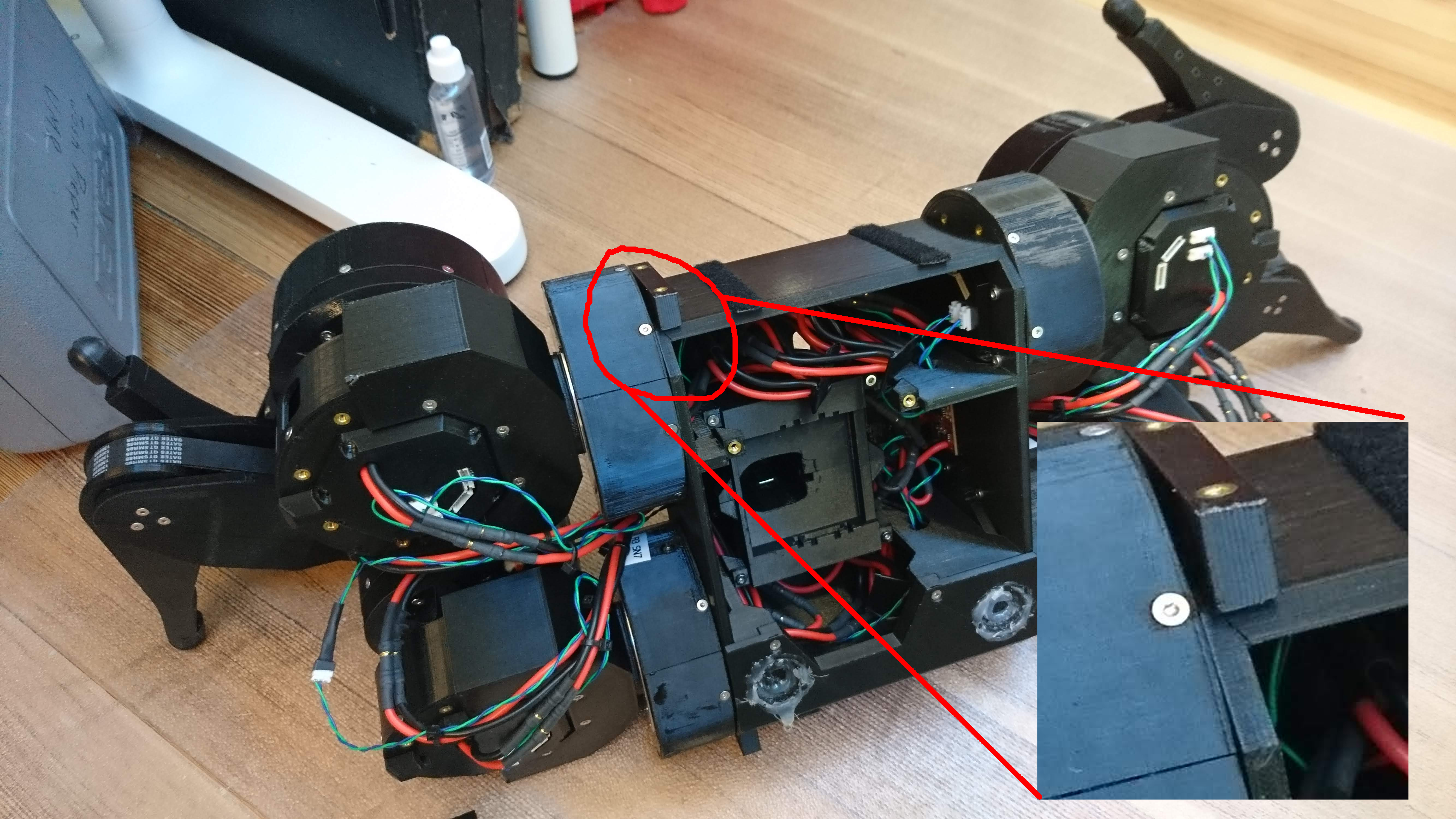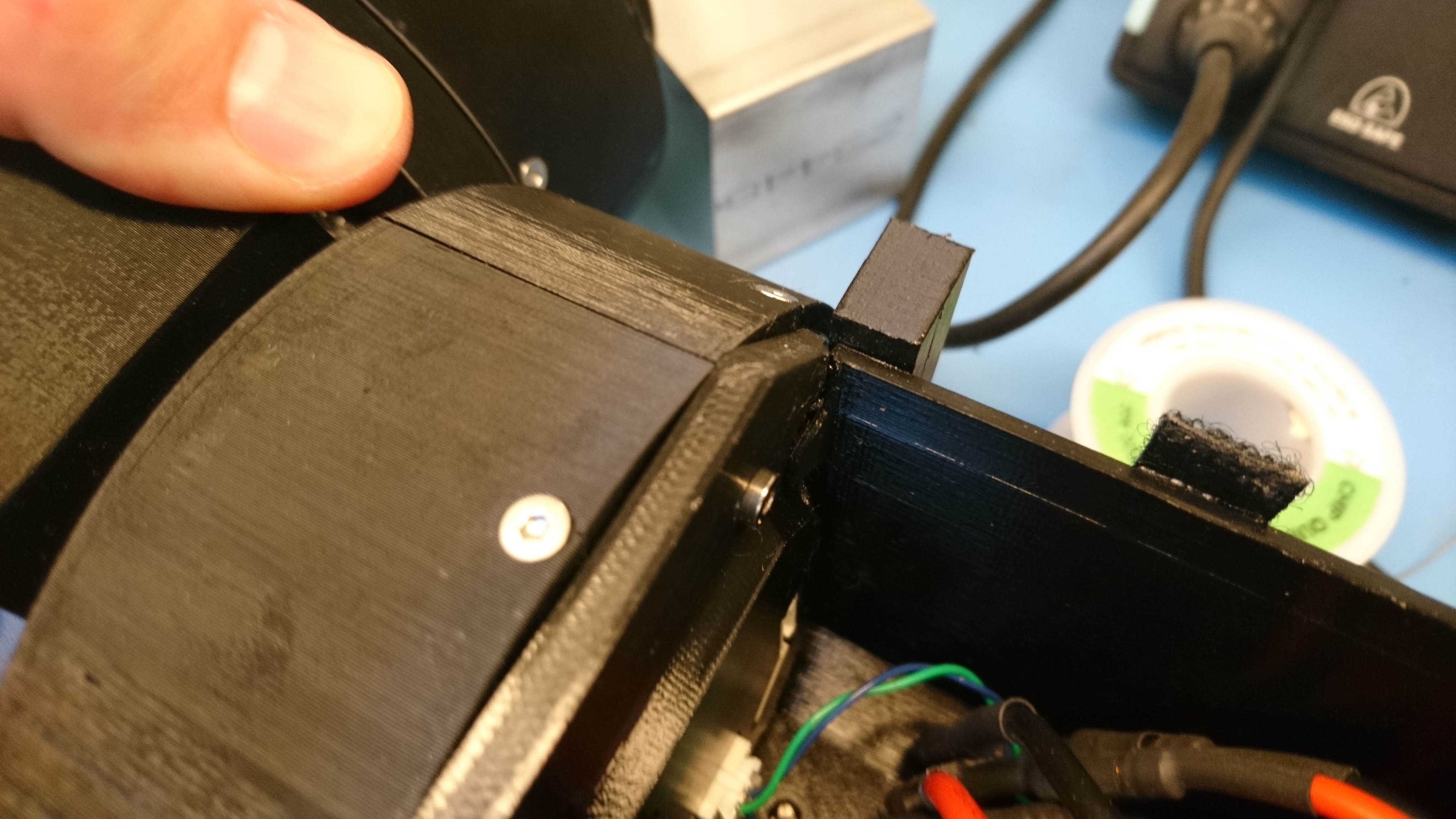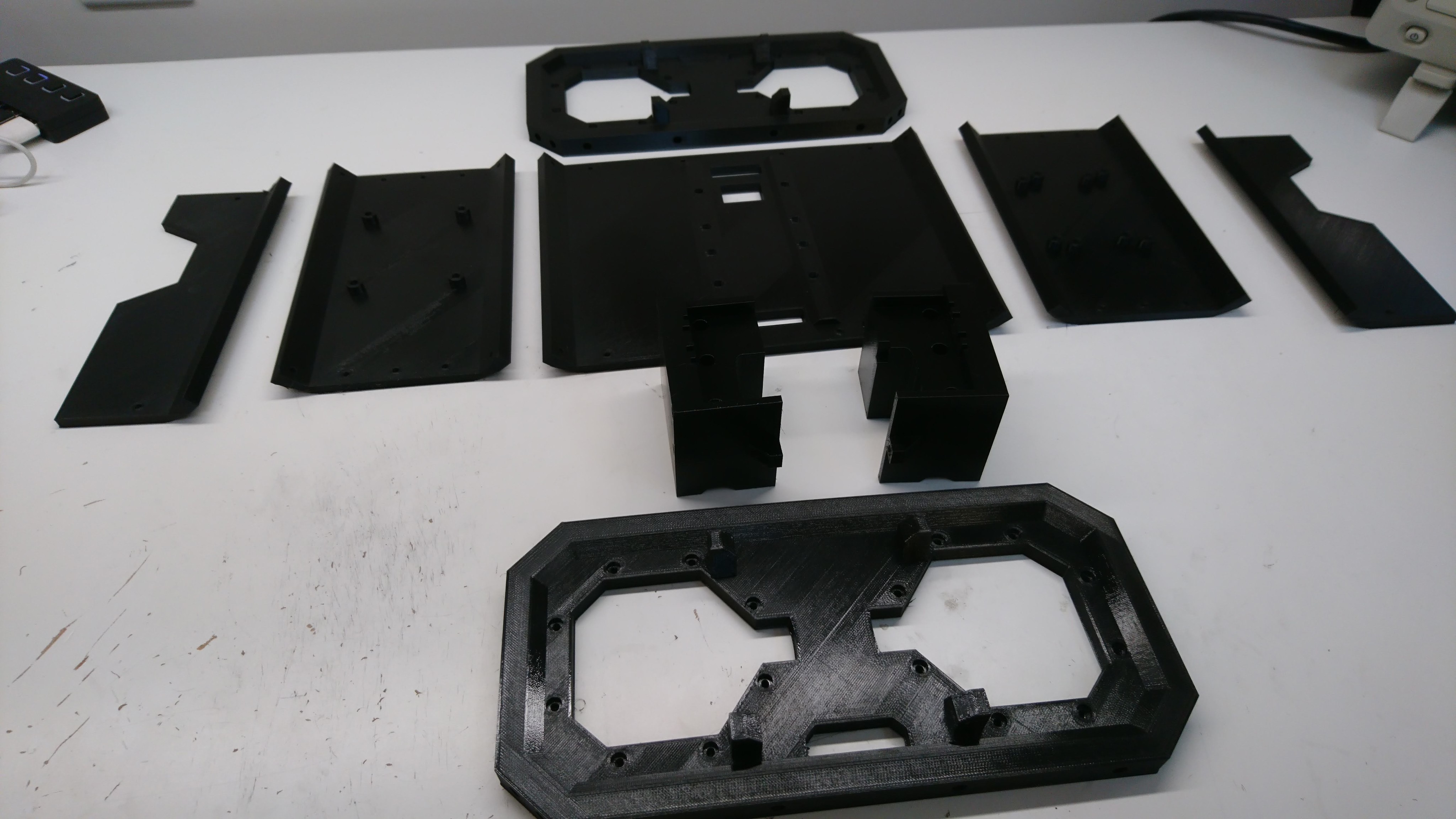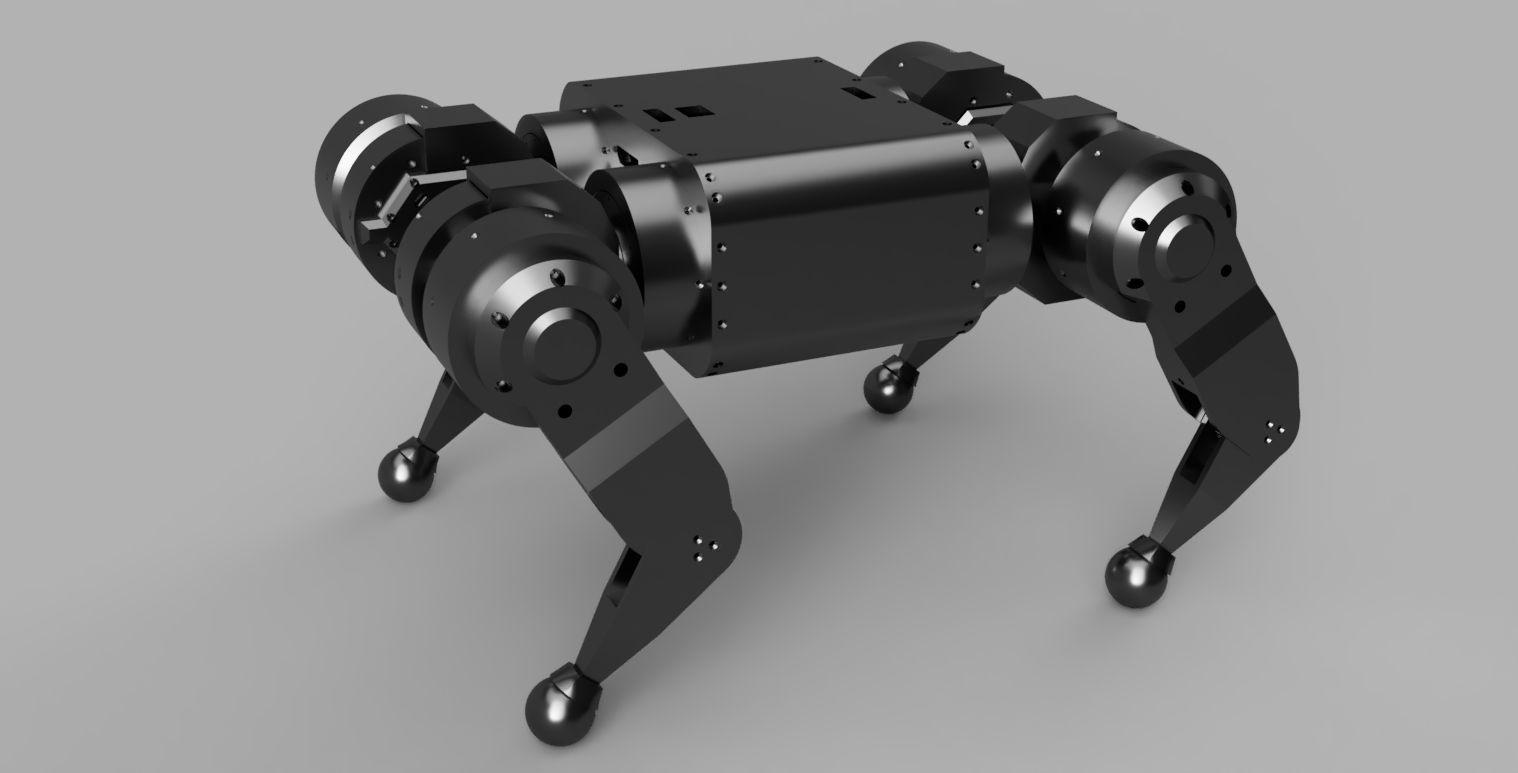Successful pronking!
While not perfect, now that I have flux braking in place, I have now succesfully pronked around for a while without faulting! There are a number of outstanding problems that still need to be addressed:
- Sometimes the landing phase is erroneously cut short
- There is occasionally a grinding like noise that sounds like some controller is unstable
- I think the lateral movement is not working correctly
- The gait needs to be smarter about moving the legs past the center point when in mid-flight, and changing the gait period to achieve different speeds
- And probably a bunch of other problems I haven’t even identified yet
That said, it is still fun to watch it romp around!




